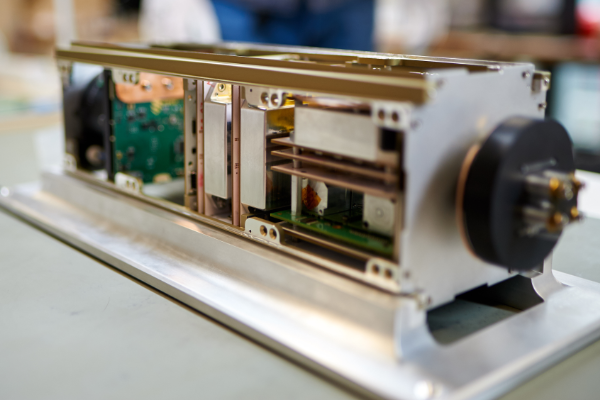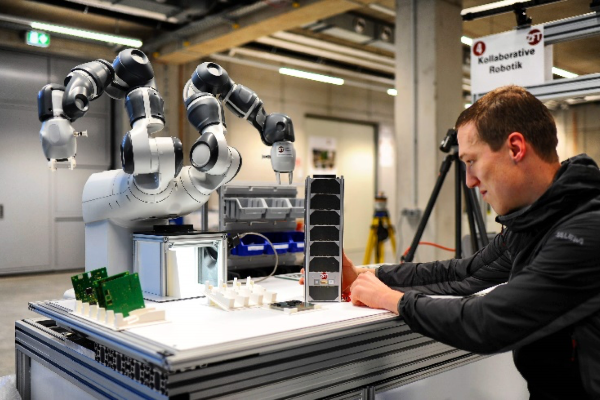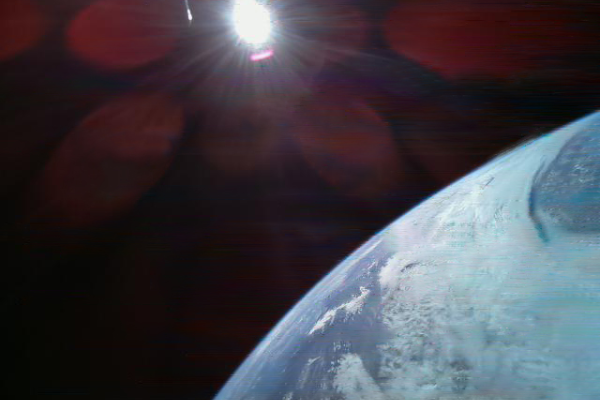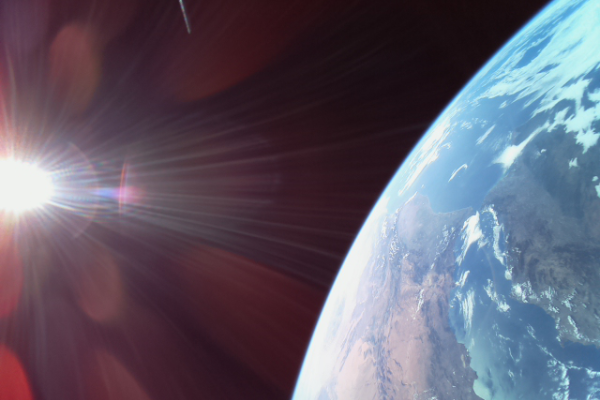NetSat - Pioneering Research in Formation Control
07.02.2020

NetSat is to demonstrate for the first time the self-organization of several satellites in three-dimensional space within the framework of a formation in orbit. To this end, important new technologies for formation control and coordination are being researched. This will then open up innovative perspectives for future sensor networks in space for Earth observation, such as three-dimensional images of the Earth’s surface and computer tomography methods for looking inside clouds.
Our special page on the Netsat Launch event can be found here: www.telematik-zentrum.de/en/projects/ns_launch/.
Supported by an ERC Advanced Grant
Prof. Dr. Klaus Schilling (Univ. Würzburg) received this highest valued European research award for individual scientists from the European Research Council in 2012 and realized this pioneering research at ZfT as host institution, owing to its outstanding test environment for multi-satellite systems.
The in-orbit formation tests were also funded by the Bavarian State Ministry of Economic Affairs, Regional Development and Energy as part of the ForTe project.
Detailed Description
Integration of a NetSat satellite at Zentrum fuer Telematik Use of collaborative robotics in satellite manufacturing

As part of NetSat, four Cubesats (with a mass of only 4 kg) were developed with the necessary miniaturized subsystems to allow operations in the form of a self-organizing formation; examples include advanced systems for attitude determination and control, orbit determination, telecommunication, electrical propulsion for orbit control and formation maintenance, in particular also distributed, adaptive control systems related to self-organisation in orbit. This mission realizes, for the first time worldwide, a formation flight of satellites in a three-dimensional configuration. This enables potential innovative future applications in Earth observation.
The four NetSat satellites were placed in a low-earth orbit by a Soyuz rocket on September 28, 2020. Further information about the rocket launch and the livestream can be found here: NetSat Launch Event.
First images of NetSat from orbit at 575 km altitude. The African Mediterranean coast as well as the Strait of Gibraltar recorded by NetSat-2 in November 2020.

Videos and Podcast
Video Formationsflug 1: Transfer from Cartwheel 3:1 to Cartwheel Helix Formation
Video Formationsflug 2: Transfer from Tetrahedron to Cartwheel 3:1 Formation
Wueconomics Podcast: Disruptive satellite technologies & internet of space
Munich Aerospace: Kleine, vernetzte, kooperierende Satelliten (in German)
Skoltech Colloquium: Small Satellite Formations with Prof Schilling (English)
Bayerischer Rundfunk Hörfunk Bayern Plus: NetSat-Kleinst-Satelliten zur Klimaerforschung (in German)
Reports on Netsat
Aerospace - Spotlight on ERC projects: Satellites: small is beautiful
EU Horizons Magazine: Fleets of autonomous satellites to coordinate tasks among themselves
Research*eu Magazines: Advancing the feasibility of self-organising small satellite formations
ERC Webpage: Small, but cooperative: the future of spacecraft systems
VDI-Nachrichten 18.5.2020 Satelliten im Formationsflug
Wirtschaft in Mainfranken, August 2020 Innovative Sensornetze in 600 Kilometer Höhe
Elektroniknet 26.05.2020: Sensor networks of satellites
Information for radio amateurs
Description of the NetSat Radio Beacon NetSat OBC Beacon Definition Revision 001B
Further Interesting Links
Universität Würzburg
Lehrstuhl für Robotik und Telematik
Innovative Earth Observation
TIM - Telematics International Mission
CloudCT - View into the interior of clouds
Funding
This project was funded by the European Research Council (ERC) Advanced Grant. Link to EU page.

Contact
For further information please contact us at: 



